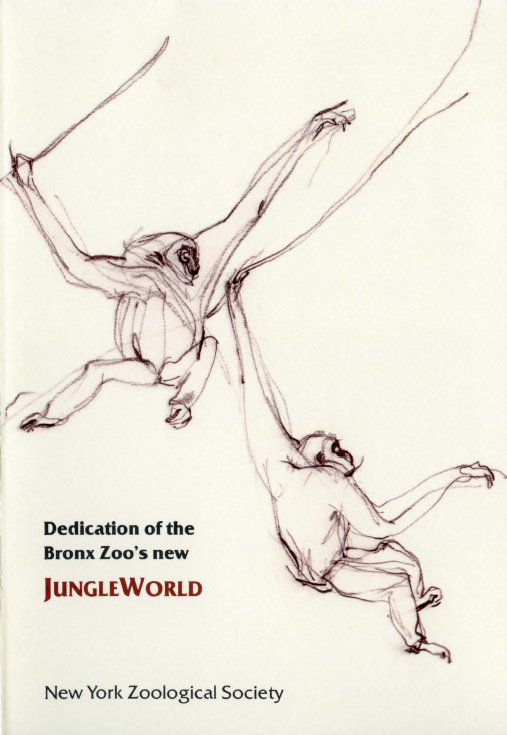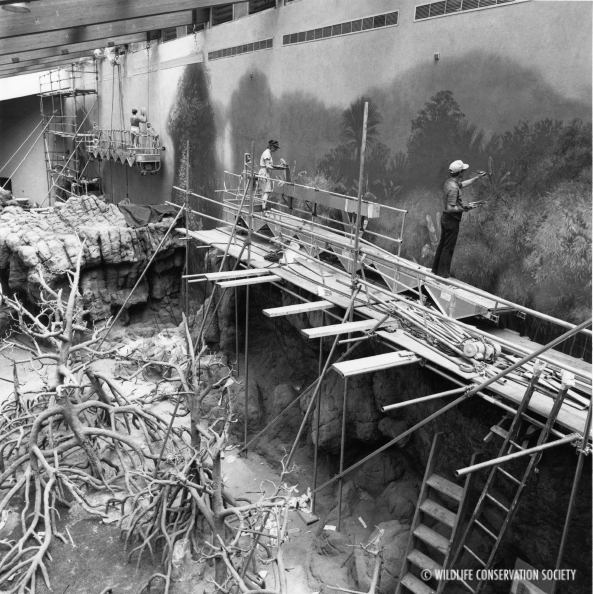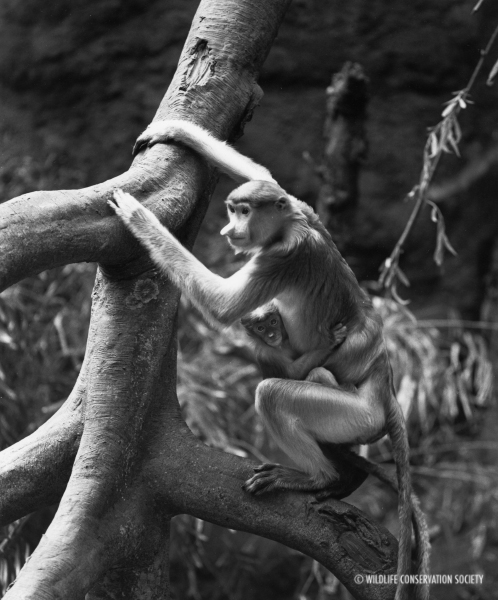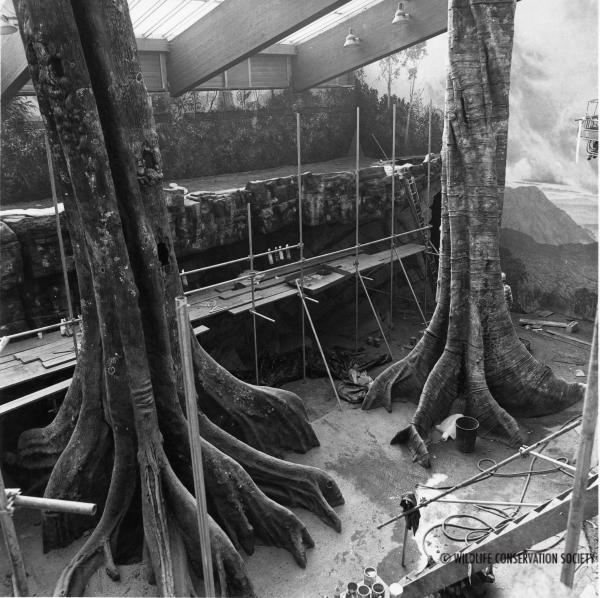 Thirty years ago today, the Bronx Zoo’s JungleWorld exhibit opened to the public. Posed in the 1985 NYZS Annual Report as an “experiment” that built upon decades of innovations in zoogeographic exhibition, JungleWorld sought to break new ground in wild animal care and exhibition, and it was widely considered the most ambitious indoor zoological environment ever created at the time.
Thirty years ago today, the Bronx Zoo’s JungleWorld exhibit opened to the public. Posed in the 1985 NYZS Annual Report as an “experiment” that built upon decades of innovations in zoogeographic exhibition, JungleWorld sought to break new ground in wild animal care and exhibition, and it was widely considered the most ambitious indoor zoological environment ever created at the time.

Program for the Dedication of JungleWorld, June 21, 1985, featuring sketches by Deborah Ross. WCS Archives Collection 1028
JungleWorld also marked the completion of the Zoo’s Wild Asia complex of exhibits, begun in the 1970s and including Asia Plaza and the Wild Asia monorail. In fact, JungleWorld had originally been conceived as an orientation building for Wild Asia in its planning stages (when it was known as Tropic Asia), but it soon grew into its own major exhibit to showcase the wonders and importance of the world’s rain forests.
Bringing more than 1,000,000 cubic feet (37,380 square feet) of rain forests, mangrove swamps, scrub forests, and tropical rivers to the Bronx was not an easy task. It required years of planning and construction, directed by a team of scientific, artistic, and mechanical staff led by Bronx Zoo Director William Conway, Exhibits and Graphic Arts Department (EGAD) Director John Gwynne, Deputy Director of Operations David Cole, and General Curator James Doherty. The generosity of chief benefactor Enid A. Haupt made the plans a reality.
Working together, NYZS staff and the Mervin Larson Company of Tucson, Arizona executed the designs of NYZS Chief Exhibition Designer Walter Deichmann. As the 1985 Annual Report described, “EGAD transformed steel, concrete, fiberglass, paint, and epoxy into faithful replicas of lichen-covered limestone outcrops, arboreal ant nests, eroded mudbanks, and giant buttressed trees festooned with tangles of mossy lianas.”
Artists Jonquil and David Rock shaped the space with their work, and muralist Nick Wilson completed an enormous trompe l’oeil diorama covering more than 17,500 square feet of surface. In addition to painted and fabricated plants, real ones became integral to JungleWorld’s design: upon its opening, the exhibit featured more than 100 species of tropical plants, from prehistoric cycads to several varieties of orchids.
And then, of course, there were the animals. When it opened, JungleWorld was home to approximately 780 animals of 99 species, from Bali mynas and Fly River turtles to smooth-clawed otters and proboscis monkeys–the last of which were part of the country’s only breeding program for the species at the time.

Artists working on section of 17,500 square foot mural inside JungleWorld, circa 1984. WCS Photo Collection
What’s so fascinating about these photos is that they remind you of what’s so easy to forget inside JungleWorld: that you’re actually inside one single enormous building in the Bronx. In part, this is because of the animals, plants, and skillful design work. At the same time, it’s also due to the building’s spatial choreography, which guides you between views that are alternately confined and expanded–from quiet, narrow interpretive galleries to large, lively, verdant habitats.
In its design, JungleWorld also reflected the Society’s increasing role in education and conservation. Reminders throughout the exhibit that the world’s rain forests are disappearing at an alarming rate culminate at the exhibit’s close with the jungle countdown clock (showing the decrease in rain forest each second) alongside the population countup clock (showing the increase in world population each second). JungleWorld was designed to bring the jungle to New York. But it was ultimately intended to highlight how that jungle might cease to exist without human understanding and care. As William Conway put it at the Dedication Ceremony for JungleWorld, “What is the beauty that will vanish when the rain forests disappear, what valuable resources and medicines, what unimaginable diversity of life, what secrets of nature that will never even be suspected? In our need to know and to act, we have raised these questions in JungleWorld and then attempted to answer them.”
Yet, in spite of the dangers to the rain forest that JungleWorld sought to convey, it was also, as Conway explained, a celebration of the rain forest and of the potential for its protection: “JungleWorld is, above all, a treasury of life, a special tribute to the earth’s riches. It is a compelling educational tool meant to convey how beautiful as well as valuable and interesting life is in all its forms. It is meant not as a last refuge but as an intervention of hope for the future.”






I love wild life jungle looking forward and want to become member.want to support in any way I can thank you ♡♡♡
Thank you, Annie! You can find out more about WCS membership here: http://www.wcs.org/wcs-membership/
Pingback: Bronx Zoo Boathouse – Hidden Waters blog